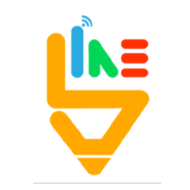In the dynamic realm of design, it’s not just about making things look good; it’s about understanding how users think, feel, and interact with what you create. In the digital realm, user interface (UI) design is not merely about aesthetics; it’s a powerful tool that can influence user behaviour and ultimately impact conversion rates. ine, a leading web design service in Bangalore understands the psychology behind UI design is key to crafting interfaces that captivate and engage. The psychology behind UI design plays a crucial role in shaping user experiences and guiding visitors towards desired actions. In this blog, we’ll explore the world of UI design psychology and how it intricately influences conversion rates.
The Visual Appeal of a Website: Fostering Trust
The human brain processes visual information at a remarkable speed, and this holds in the digital space. The visual appeal of a website, encompassing colours, fonts, and overall layout, significantly influences a user’s first impression. A visually appealing UI design establishes a positive interaction, fostering trust and encouraging users to explore further. UX design is the art of creating digital experiences that are inclusive, simple and accessible for users. It encompasses a wide range of disciplines, including psychology, technology and design, with the ultimate goal of enhancing loyalty and user satisfaction.
Navigational Flow: Guiding the User’s Journey
The layout and navigation of a website act as a roadmap for users. Intuitive navigation that guides users seamlessly through the site creates a positive user experience. Implementing clear calls-to-action, strategically placing menus, and offering a logical flow of information all contribute to a sense of control for users, reducing cognitive load and increasing the likelihood of conversion.
The Power of Familiarity: Leverage User Expectations
Users have certain expectations regarding the layout and functionality of websites, often shaped by their prior online experiences. Aligning your UI design with these expectations creates a sense of familiarity, making it easier for users to understand and interact with your site. A familiar interface reduces friction, enhancing user confidence and positively impacting conversion rates.
Colour Psychology: Triggering Emotions and Actions
Colour is a powerful element in UI design that goes beyond aesthetics. Colours evoke specific emotions in user and influence their behaviour. For instance, warm colours like red and orange can create a sense of urgency, prompting action, while cool colours like blue convey trust and reliability. Understanding colour psychology allows designers to strategically use hues to guide users towards conversion actions.
The Psychology of Typography: Readability and Trust
Typography is more than just choosing attractive fonts; it directly impacts the readability and perceived trustworthiness of a website. Clear, legible fonts convey professionalism and make content more digestible. Consistent typography across the site establishes visual coherence, reinforcing brand identity and instilling confidence in users, which is crucial for conversion.
Simplifying for Enhanced User Experience
A cluttered and complex UI design overwhelms users, increasing cognitive load and hindering their ability to make decisions. By simplifying the design, presenting information in digestible chunks, and minimizing distractions, 5ine’s professional designers can reduce cognitive load, leading to a smoother UI/UX Development Service and higher conversion rates.
Social Proof and Trust Signals: Influencing Decision-Making
Humans are inherently social beings, and the psychology of UI design leverages this by incorporating social proof and trust signals. User reviews, testimonials, and trust badges strategically placed within the interface can influence users’ trust in the brand, product, or service. Trustworthy elements enhance credibility, alleviating concerns and nudging users towards conversion.
Responsive Design: Building Trust through Consistency
Consistency across various devices reinforces a sense of reliability and professionalism. A responsive design that adapts seamlessly to different screen sizes ensures that users have a consistent and positive experience regardless of the device they use. 5ine a popular web design service in Bangalore maintains consistency and builds trust, which is a critical factor in influencing users to complete desired actions.
Feedback and Confirmation: Reinforcing User Confidence
Providing immediate feedback and confirmation after a user takes an action, such as making a purchase or filling out a form, reinforces their confidence in the decision. Visual cues, like progress bars or success messages, assure users that their actions were successful. This positive reinforcement enhances the overall user experience and contributes to higher conversion rates.
Summary
The psychology behind UI design is a dynamic interplay of visual elements, navigational flow, and psychological triggers that influence user behaviour. By understanding the cognitive processes and emotional responses of users, designers can create interfaces that not only look appealing but also guide users towards conversions. The art and science of UI design converge to create an immersive digital experience that captivates users and drives them to take desired actions, ultimately contributing to the success of a website.
By incorporating principles from cognitive psychology, emotional design, behavioural psychology, and user research, designers can craft interfaces that are not only visually appealing but also intuitive, engaging, and user-centred. From ideas to building intuitive interfaces, 5ine helps you visualize your dream designs. Our creative designers possess expertise in UI/UX Development Services and can convert your design conception into a creative concept with phenomenal designs. Get in touch with us today to commence a colourful design journey with us!




